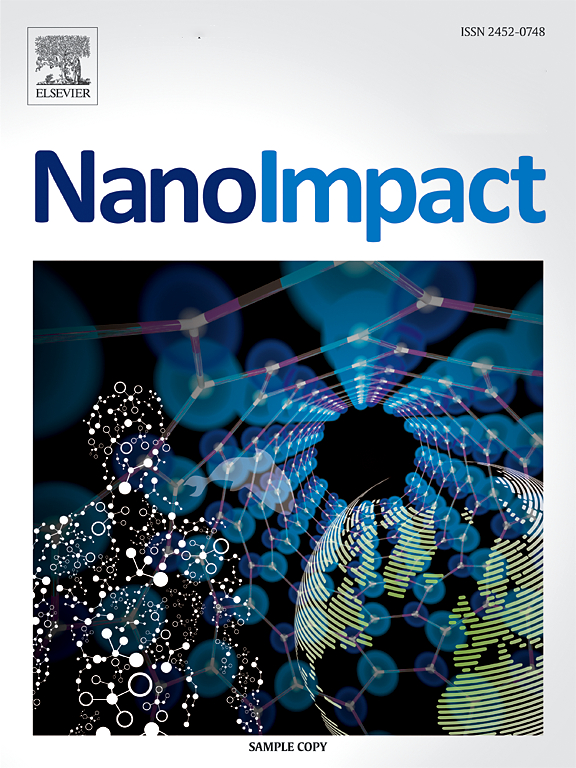纳米材料反应毒性的催化研究对单组分和多组分纳米材料(纳米复合材料)的影响。
IF 5.5
3区 环境科学与生态学
Q2 ENVIRONMENTAL SCIENCES
引用次数: 0
摘要
一种特定产品的长期使用通常先于对其的担忧。基于反应性的纳米毒性是一个必须从其基本理解到其监管管理的主要问题。此外,概念和想法必须在相关执行者之间无缝流动。功能纳米材料在许多领域得到了应用;其中,催化可能是纳米材料最早的更广泛的应用,这些材料被设计为提供特定的性能,通常被称为工程纳米材料(enm)。多相催化与基于反应性的毒性具有相同的基本特征。在这两种情况下,我们都在处理由纳米材料表面发生的反应引发的现象。因此,多相催化的广泛知识是理解基于反应性的纳米毒理学的关键。在这方面,确定表面暴露是机械理解剂量反应的基础,类似于催化如何从基于质量的指标转变为以表面为中心的指标。催化科学做了进一步的改进迭代:反应发生在表面上,尽管不是所有的表面都必须是反应性的,这使得标准化每个反应位点变得至关重要。这一观点集中在连接多相催化和基于反应性的纳米毒性的两个关键方面:纳米材料表面的反应位点以及纳米材料的不同组合如何出现和表现。本文还对“多组分纳米材料”这一模糊的术语进行了评论,这与化学学界定义明确、已建立并被广泛接受的术语“纳米复合材料”形成了对比。清晰和精确的术语和概念对于有效的研究和监管至关重要。本文章由计算机程序翻译,如有差异,请以英文原文为准。
A catalytic perspective to nanomaterials reactivity-based toxicity; implications for single- and multiple-component nanomaterials (nanocomposites)
The extended use of a given product normally precedes concerns about it. The reactivity-based nanotoxicity is a major concern that must be tackled from its fundamental understanding to its regulatory management. Moreover, concepts and ideas must seamlessly flow between relevant performers. Functional nanomaterials have been used in many fields; among these, catalysis is probably the earliest more extended application of nanomaterials, these are engineered to afford specific properties, and are typically known as Engineered Nanomaterials (ENMs). Heterogenous catalysis shares its basic features with reactivity-based toxicity. In both cases, we are dealing with phenomena triggered by reactions occurring at the surface of the nanomaterial. Therefore, the extensive knowledge in heterogeneous catalysis is key to understanding reactivity-based nanotoxicology. In this regard, determining surface exposure is fundamental to mechanistically comprehend dose-response, similar to how catalysis shifted from mass-based to surface-centered metrics. Catalysis science made a further refinement iteration: reactions occur at surfaces, though not all surfaces are necessarily reactive, making it crucial to normalize per reactive site. This perspective focuses on two key aspects that link heterogeneous catalysis and reactivity-based nanotoxicity: the reactive sites on the surface of nanomaterials and how different combinations of nanomaterials appear and perform. A comment is also made regarding the somewhat vague term ‘multicomponent nanomaterial,’ which is contrasted with the well-defined, established, and widely accepted term ‘nanocomposite’ within the chemical community. Clear and precise terminology and concepts are essential for effective research and regulation.
求助全文
通过发布文献求助,成功后即可免费获取论文全文。
去求助
来源期刊

NanoImpact
Social Sciences-Safety Research
CiteScore
11.00
自引率
6.10%
发文量
69
审稿时长
23 days
期刊介绍:
NanoImpact is a multidisciplinary journal that focuses on nanosafety research and areas related to the impacts of manufactured nanomaterials on human and environmental systems and the behavior of nanomaterials in these systems.
 求助内容:
求助内容: 应助结果提醒方式:
应助结果提醒方式:


